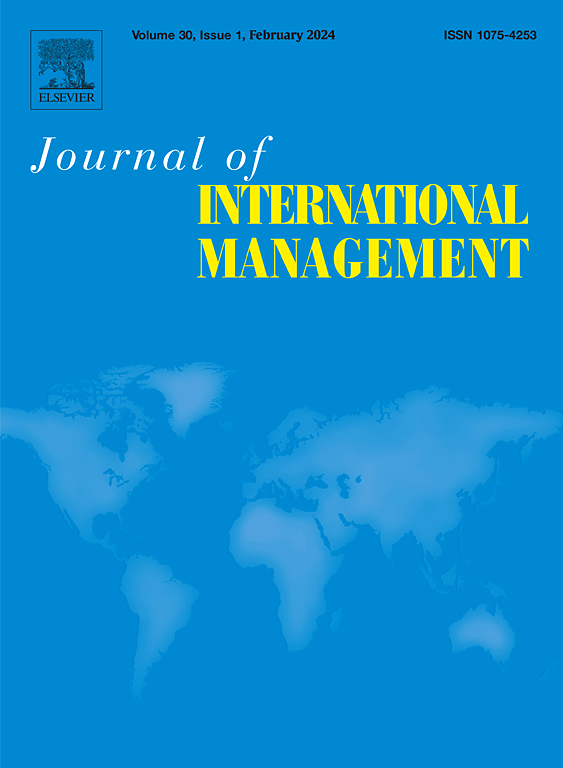混乱世界中的全球互联互通
IF 4.9
2区 管理学
Q1 MANAGEMENT
引用次数: 0
摘要
全球互联互通是进步的关键推动因素,因为它有助于跨越组织和国家边界的商品、知识和思想交流。以技术和人为基础的网络是互联互通的主要驱动力。信息和通信技术的发展,以及人员的跨境流动,极大地加速了全球范围内的合作,促进了创新、文化交流和经济繁荣。然而,互联互通是一把双刃剑。我们这个世界日益紧密的联系也揭示了全球联系的责任,这使得国家和组织更容易受到干扰,特别是在某些情况下。我们讨论了当中断发生时,不同形式的连接如何面临不同的威胁,这取决于此类中断的来源和可预测性。我们分析的一个关键支柱是关注人类和技术因素之间复杂的相互作用,这些因素塑造了我们相互联系的世界,并对公司,特别是跨国企业(MNEs)产生了影响。通过平衡技术和人为因素,仔细分析互联性的综合组合,是确保跨国公司在复杂、互联的世界中恢复力和更新的核心战略必要条件。我们对国际商业背景下的全球连通性提供了更全面的视角,以了解中断的复杂性。在丰富的基础上,我们提出了一个议程,概述了未来研究的新途径,以提高我们对中断世界中全球连通性的集体理解。本文章由计算机程序翻译,如有差异,请以英文原文为准。
Global connectivity in a world of disruptions
Global connectivity represents a critical enabler of progress as it contributes to the exchange of goods, knowledge, and ideas across organizational and national borders. Technology- and human-based networks are the prime drivers of connectivity. The development of information and communication technologies, together with the movement of people across borders, has dramatically accelerated collaboration on a global scale, fostering innovation, cultural exchange, and economic prosperity. Yet, connectivity is a double-edged sword. The increasing interconnectedness of our world also uncovers the liability of global connections, which renders countries and organizations more vulnerable to disruptions, particularly under certain conditions. We discuss how different forms of connectivity face distinct threats when disruptions occur, depending on the source and predictability of such disruptions. A key pillar of our analysis is the focus on the complex interplay between human and technological factors in shaping our interconnected world and the implications for firms, especially multinational enterprises (MNEs). Carefully analyzing the composite portfolio of connectivity by balancing the technological and human factors is a core strategic requisite to ensure resilience and renewal for MNEs in a complex, interconnected world. We provide a more comprehensive perspective on global connectivity in the international business context to understand the complexities of disruptions. Building on a rich foundation, we offer an agenda outlining new avenues for future research to improve our collective understanding of global connectivity in a world of disruptions.
求助全文
通过发布文献求助,成功后即可免费获取论文全文。
去求助
来源期刊

Journal of International Management
MANAGEMENT-
自引率
9.80%
发文量
67
审稿时长
81 days
期刊介绍:
The Journal of International Management is devoted to advancing an understanding of issues in the management of global enterprises, global management theory, and practice; and providing theoretical and managerial implications useful for the further development of research. It is designed to serve an audience of academic researchers and educators, as well as business professionals, by publishing both theoretical and empirical research relating to international management and strategy issues. JIM publishes theoretical and empirical research addressing international business strategy, comparative and cross-cultural management, risk management, organizational behavior, and human resource management, among others.
 求助内容:
求助内容: 应助结果提醒方式:
应助结果提醒方式:


